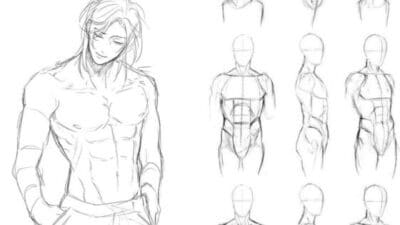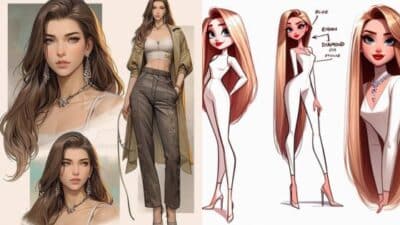If you’ve ever admired the elegance of fashion sketches or wanted to design your own clothing, dress drawing is a rewarding skill you can start today. By learning the essentials of dress drawing, you gain the ability to bring your creative ideas to life and visualize unique outfit designs clearly and effectively. With practice, even beginners can capture the flow and details of a dress, whether for personal enjoyment, fashion illustration, or professional design.
There are many methods and resources available, from online tutorials to inspiration boards filled with different styles and techniques. As you dive into dress drawing, you’ll discover various ways to express creativity, experiment with new trends, and develop your own artistic style while keeping up with the latest in fashion design.
Key Takeaways
- Dress drawing lets you visualize clothing designs and creative ideas.
- Using the right tools and techniques can improve your sketches.
- Finding inspiration and practicing different styles helps you grow as a fashion artist.


Fundamentals of Dress Drawing
Mastering dress drawing involves understanding sketching techniques, using accurate dress forms, and recognizing the differences between sketches and illustrations. These aspects help you create balanced and realistic clothing visuals.
Essential Drawing Techniques
To begin drawing dresses, you should work with basic geometric shapes as a foundation. Start with simple lines and forms to construct the figure and define the pose.
Once the figure is set, outline the silhouette of the dress. Use long, confident strokes for smooth fabrics like silk, and add small, curved lines for textured fabrics or details such as frills and pleats.
Pay attention to the natural drape of the fabric and gravity’s effect. Shading techniques help add depth—use hatching or cross-hatching in areas where the dress folds or overlaps.
Reference images, both photographic and illustrated, are valuable for accuracy and inspiration. Practice observing the folds, direction of light, and how fabric wraps around the body.
Understanding Dress Forms
Dress forms, also called croquis, act as templates that guide garment proportions and fit. You start with a croquis—a lightly sketched body outline—to help ensure the dress follows the body’s structure accurately.
Working with standard proportions makes your sketches more readable. Most croquis emphasize elongated figures, often eight to nine heads tall, to match fashion illustration norms.
A well-proportioned dress form prevents awkward garment shapes. Use the croquis to experiment with different styles and adjust garment placements, like waistlines, necklines, and sleeves.
Having access to reusable templates or digital tools can speed up the sketching process. This helps in maintaining consistency across your portfolio or design work.


Dress Sketch Vs. Illustration
A dress sketch is usually quick, focusing on capturing the basic silhouette, style lines, and structure. You use light, minimal lines and simplify details to communicate the core idea efficiently.
In contrast, a dress illustration is more detailed and refined. You add texture, color, shadows, and highlights to bring the design to life and show how the fabric might look and feel.
Dress sketches are helpful in the initial design phase. Illustrations, with their polished finish, are often used for presentations, portfolios, or client communications.
| Comparison | Sketch | Illustration |
|---|---|---|
| Detail Level | Basic, minimal details | Refined, includes textures |
| Purpose | Explore concepts quickly | Present final ideas |
| Time Required | Short | Longer, more in-depth |
Using both approaches gives you flexibility to communicate your ideas at any stage of the fashion design process.
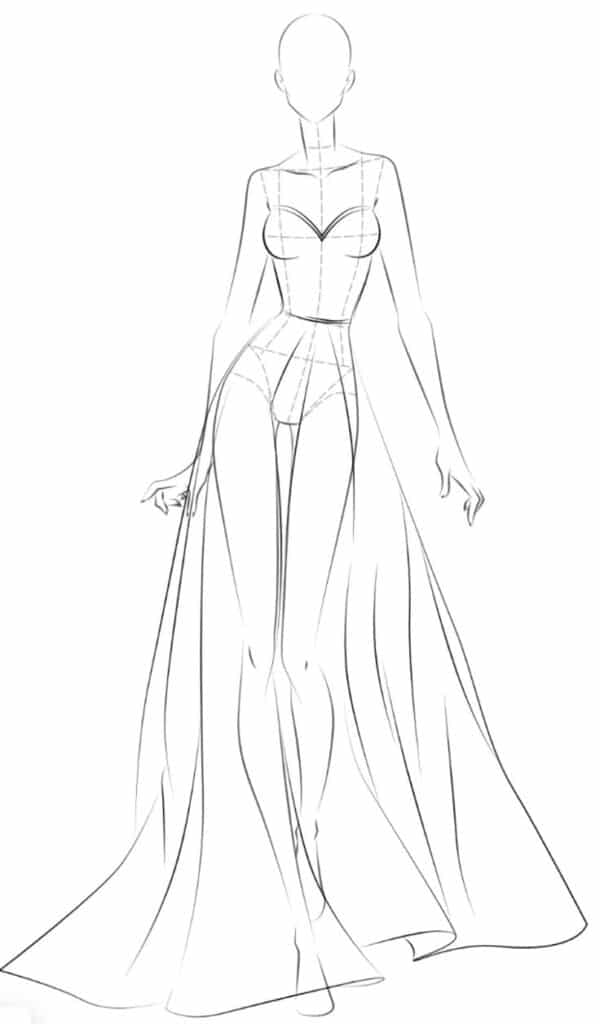

Tools and Resources for Dress Drawing
Dress drawing can be enhanced by selecting the right tools and leveraging digital resources. Careful tool choice supports both the creative process and the quality of your final illustrations.
Traditional and Digital Tools
When sketching dresses, pencils are a primary tool. Artists often choose woodless graphite pencils, mechanical pencils, or Ebony pencils for varied line quality. For color, markers (such as Copic or Prismacolor), colored pencils, and watercolors add depth and texture to dress sketches.
Inking pens help with clean outlines and details. White gel pens enable highlighting. For paper, smooth marker pads or heavyweight sketchbooks prevent bleed-through and allow for layering.
Digital artists frequently use drawing tablets paired with software like Adobe Photoshop or Procreate. These tools give access to layers, undo functions, digital brushes, and color palettes. A tablet with a pressure-sensitive stylus, such as a Wacom or iPad with Apple Pencil, mimics traditional drawing techniques while offering flexibility and efficiency during revisions.
Utilizing Vectors and Stock Photos
Working with vector graphics allows for scalable, crisp line art that can be easily edited. Adobe Illustrator is a leading program for creating dress vectors. You can build templates or detailed garment flats in vector format, ensuring clarity even when resizing.
Stock photos offer valuable references for posture, lighting, and fabric rendering. You can trace over stock images or use them as inspiration when designing new dresses. Many artists use sites like I Draw Fashion for figure templates or browse licensed stock image libraries for a broad range of poses.
Both vector resources and stock images help streamline your workflow. They enable rapid prototyping, modifications, and professional presentation of finished dress drawings. They are especially beneficial when creating portfolios or commercial illustrations where accuracy and repeatability are important.

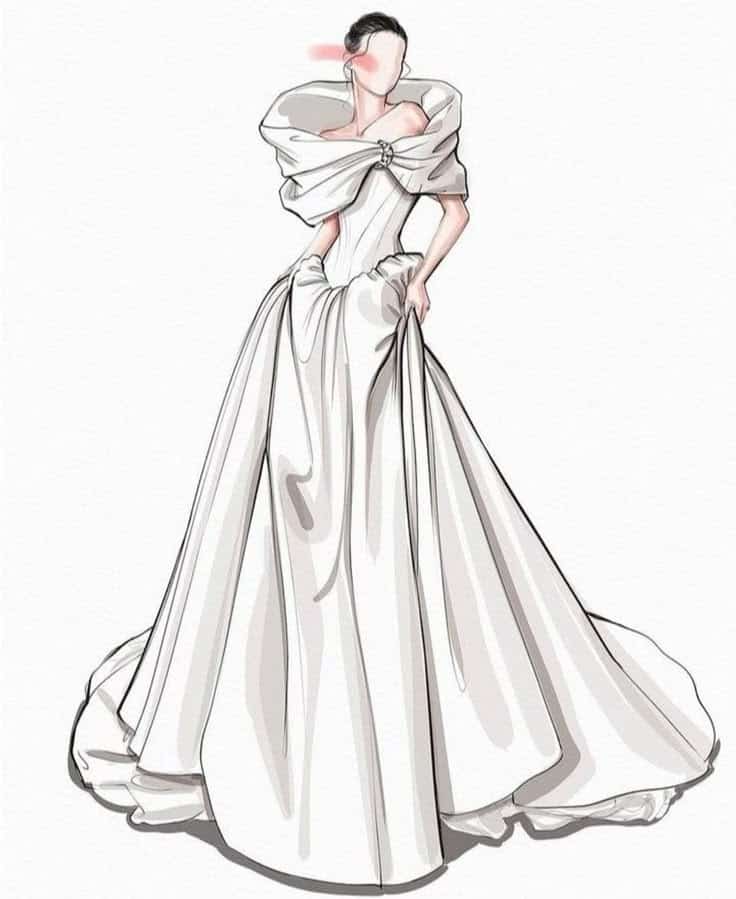
Inspiration and Fashion Design
In dress drawing, creative vision is shaped by diverse sources, thoughtful design principles, and a strong sense of color. Paying attention to these elements can elevate your illustrations and align them with professional standards in fashion.
Finding Creative Inspiration
Creative inspiration may come from current fashion trends, historic garments, or cultural attire. You can browse platforms like Pinterest for thousands of fashion sketches and illustrations, giving you direct access to the work of various designers and illustrators.
Analyzing runway collections, visiting museums, or observing street style can also expand your reference pool. It helps to keep a sketchbook, collecting ideas and quickly noting down silhouettes, fabric textures, and unique garment details.
Look for inspiration in art, architecture, or nature by focusing on shapes, movement, and patterns. These observations can spark innovative dress ideas that go beyond typical designs.
Fashion Design Principles
Successful dress drawings consider the fundamental principles of fashion design: balance, proportion, and movement. Balanced designs maintain symmetry or intentional asymmetry, which keeps the composition visually appealing.
Proportion refers to the correct sizing of elements, such as the waist-to-skirt ratio, sleeve length, and neckline depth. A mindful use of these ratios helps make silhouettes both realistic and attractive.
Movement and flow in a sketch can bring fabric to life. Lines, folds, and draping techniques add a sense of dimension and realism. Practicing these principles ensures your fashion illustrations convey both style and function.
| Principle | Description |
|---|---|
| Balance | Visual harmony or controlled asymmetry |
| Proportion | Relationship of sizes and shapes |
| Movement | Suggests fabric flow and body posture |
Color Composition in Dress Illustrations
Color composition deeply impacts the mood and appeal of a dress illustration. Choices about color schemes should consider hue, value, and saturation to create contrast, harmony, or focal points in your design.
Start by selecting a palette that matches the garment’s intended style—neutrals for minimalism, vibrant shades for a bold statement, or pastels for a softer look. Using color swatches when planning helps maintain consistency.
Consider how different colors interact and balance across the design. Attention to shadows and highlights can also convey texture and material quality, making flat sketches appear more dynamic and realistic.
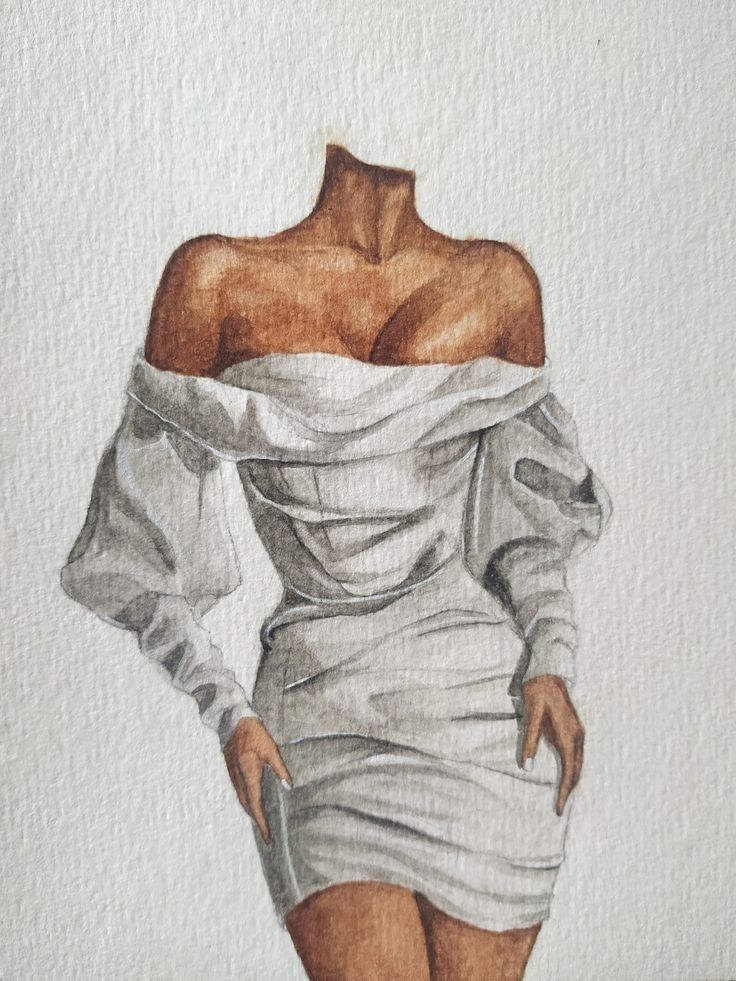

Specialized Dress Drawing Styles
Dress drawing involves creative approaches that allow you to capture different textures and perspectives. Attention to detail in floral patterns and panoramic angles can set your sketches apart.
Rendering Floral Patterns
When drawing floral patterns, focus on the rhythms and repetitions found in nature. Start by lightly sketching the dress outline in pencil. Then, lay out your floral motifs, considering their scale in relation to the fabric’s draping and movement.
To achieve depth, use varying line weights and shading techniques. Layer petals and overlap leaves, using cross-hatching or stippling to indicate shadows. Accents with colored pencils or watercolors can bring realism and vibrancy to your floral designs.
Floral patterns are often placed strategically—for example, emphasizing bodice or hem areas. Use reference images for botanical accuracy, paying attention to flower types and leaf arrangements. Detailing even small flowers or vines can give your sketch a polished, finished appearance.
Panoramic Images and Unique Perspectives
Creating panoramic images of your dress sketches allows you to showcase the garment from multiple angles in a single drawing. Arrange front, side, and back views horizontally, or experiment with a wraparound effect for a more dynamic presentation.
Use consistent proportions and align key features, like waistlines and seams, across each viewpoint. Employ thin guidelines to help maintain symmetry and balance between the perspectives.
Unique perspectives, such as viewing a dress slightly from above or below, can highlight garment structure and fabric flow. Exaggerate foreshortening or perspective in moderation to add visual interest without distorting key design elements. Adding context, such as a runway or surrounding décor, places the dress within a scene and enhances storytelling.
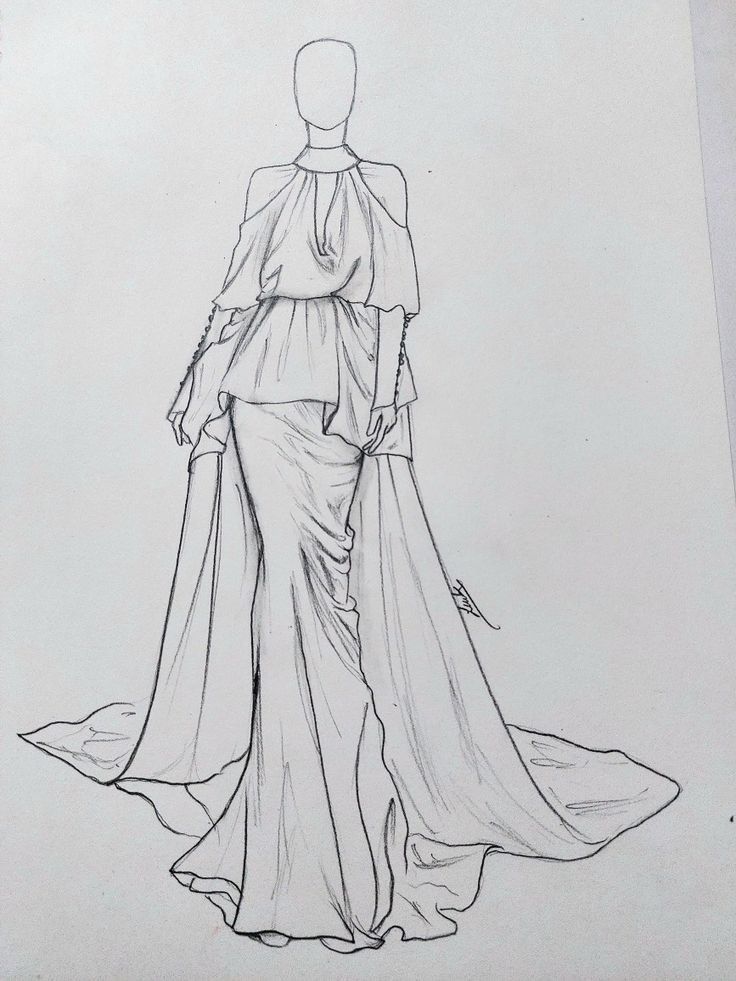

Modern Trends and Practical Considerations
Digital tools are reshaping how you approach dress drawing. Current practices include AI-assisted design, trend tracking, licensing models, and careful guidance on pricing and usage of digital assets.
AI Generated Content in Dress Drawing
AI has become a practical tool for streamlining dress drawing tasks. You can use AI to convert hand-drawn sketches into detailed digital images, accelerating the design process and broadening creative options.
Image-generation platforms can provide quick concept visualizations, fabric pattern variations, and help prototype multiple dress silhouettes. This technology often integrates with traditional drawing software, allowing you to edit AI-generated sketches to match your specific vision.
However, relying solely on AI may reduce originality, so balancing automation with human creativity is essential. Knowing how to guide and refine AI outputs ensures higher-quality, professional dress illustrations.
Dress Design Trends
Trends in dress design often shift based on seasons, cultural influences, and current fashion icons. For 2025, popular themes include minimalist shapes, sustainable materials, and gender-neutral styles.
Color palettes, such as muted tones and pastel shades, continue gaining traction. Pattern trends feature botanical prints, geometric lines, and digital art motifs that blend tradition with modern aesthetics.
Keeping up with these trends requires following fashion shows, designer releases, and industry publications. Adapting your drawings to align with or forecast these trends gives your portfolio a relevant and contemporary edge.
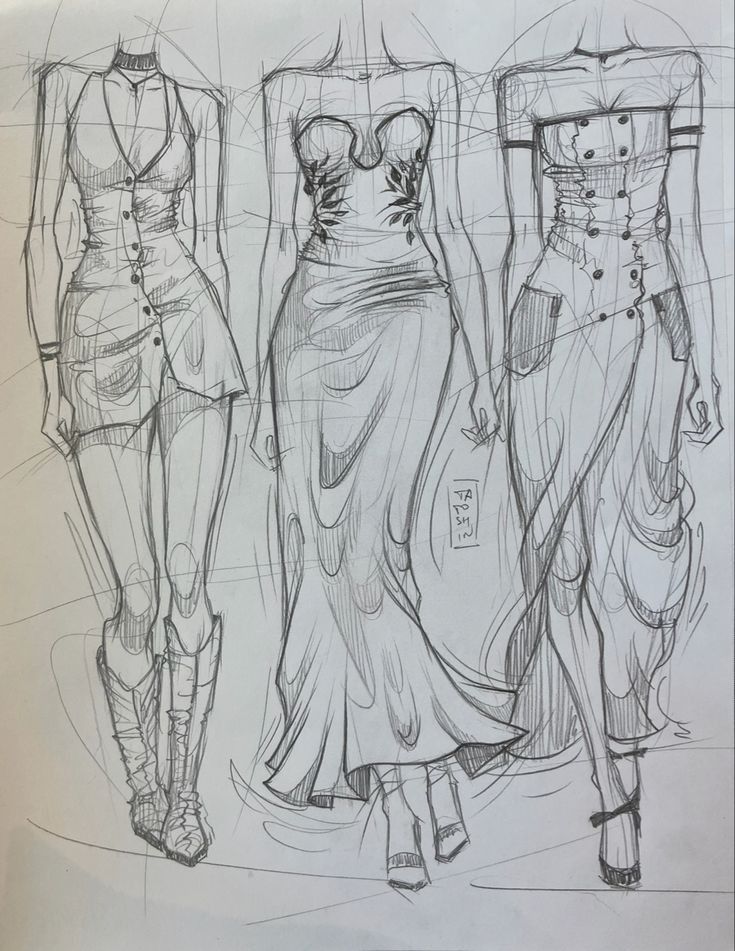

Safe Search Filters and Extended Licenses
When sourcing digital assets or references for dress drawing, using safe search filters protects you from inappropriate or irrelevant content. These filters curate search results, helping you quickly find high-quality, usable resources.
Extended licenses are critical if you plan to share, sell, or publish your artwork commercially. Standard licenses allow for limited use, while extended ones permit broader distribution, merchandising, or unlimited digital reproduction.
Always check the licensing terms tied to images, templates, and design elements before integrating them into your dress drawings. Proper licensing avoids legal issues and ensures ethical use of all reference material.
Understanding Price Levels for Digital Assets
Digital assets for dress drawing, such as brushes, templates, and reference images, come at varying price levels. These range from free resources—great for experimentation—to premium assets with advanced features or exclusive designs.
Below is an overview table:
| Price Level | Typical Features |
|---|---|
| Free | Basic quality, limited options, non-exclusive |
| Mid-range | Better detail, varied formats, some exclusivity |
| Premium/High | High-res, unique, extended license, support |
Choosing the right asset depends on your project needs and budget. Investing in premium assets may be worthwhile for professional results or commercial projects, while free or mid-range options suit personal practice or early concept work.
- 577shares
- Facebook0
- Pinterest576
- Twitter1
- Reddit0

